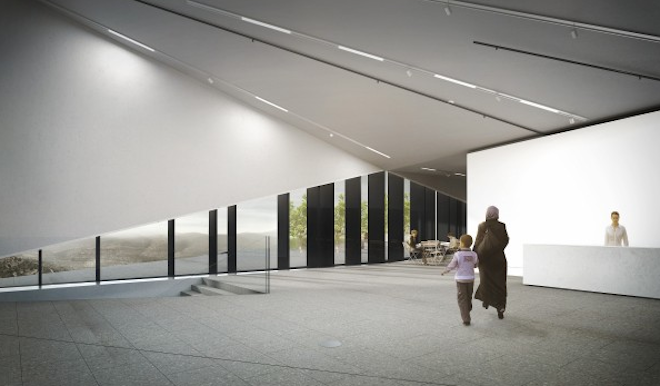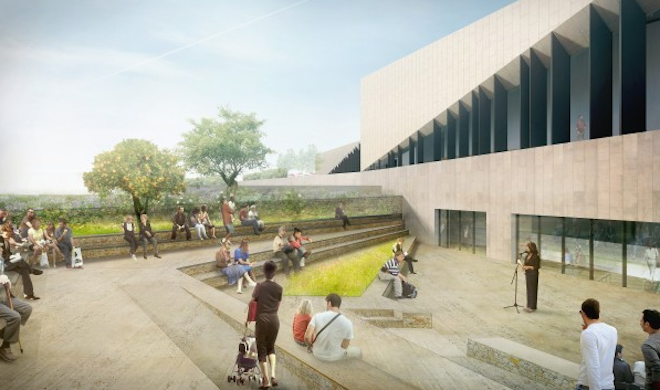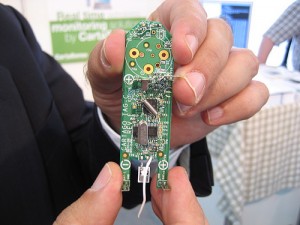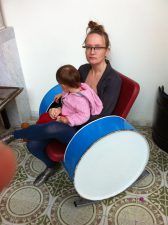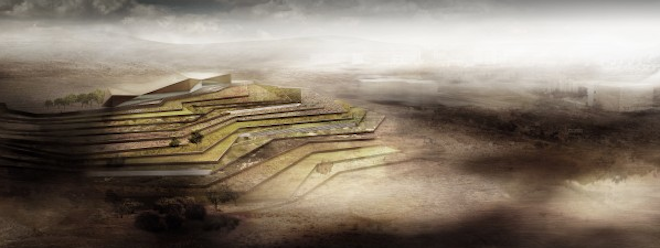 Dublin’s Heneghan Peng has designed a new museum for Palestine that is topped with a series of unfolding green terraces planted with vegetation that also grows in the surrounding hills.
Dublin’s Heneghan Peng has designed a new museum for Palestine that is topped with a series of unfolding green terraces planted with vegetation that also grows in the surrounding hills.
Designed for a hill above the West Bank village of Bir Zeit, the terraced Palestine Museum would unfold down the slope in a series of planted terraces.
Each of these, known as sanasils, would be planted with a different species of plant – including some key crops such as oranges and olives. Others would feature wilder plants that grow naturally in the verdant hills of the region, including the many healing herbs used by ancient people who once called the area home.
The more domesticated species will be kept close to the apex of the main building, while the wilder plants will be encouraged to flourish in the wings branching out from this sprawling complex.
Heneghan Peng noted in their design brief the design with its traditional Palestinian landscape patterns was first conceived as a folded paper model.
It then evolved to take on the form of a zig zag of non-uniform three dimensional terraces that appear to tumble down the side of the hill.
More than just a cosmetic approach, however, the vegetated rooftop will actually produce food, and the stepped terraces will promote efficient irrigation – much in the same way that several generations of Berber farmers in Morocco have conserved water.
Meanwhile, the interior will feature a series of typical museum functions, including exhibits, a cafeteria and a gift shop, and a classroom to promote extracurricular learning.
Envisioned as a two-phase project, the Palestine Museum would create a distinctive identity for the Palestinian people, as well as a tribute to the natural and human diversity located at the junction of a historical trade route.
:: Architizer


